#species conservation
Text
So, I saw a post circulating here about the “extinction of birds in 2023“, with this picture attached
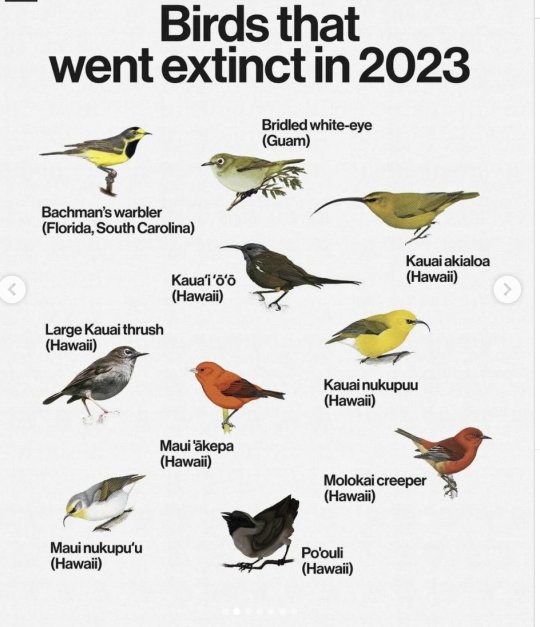
My, what a bold claim! All these poor birdies, “went extinct” in just one year alone? Why would such an outrageous, depressing and catchy claim be spread around?
Let’s fact check it.
All the species listed, Bachman’s wabler (Vermivora bachmanii, 1988 or 1980s), Kāmaʻo or large Kauaʻi thrush (Myadestes myadestinus, 1989 or 1987), Bridled white-eye (Zosterops conspicillatus, 1983 and 1983), Kauai ʻakialoa (Akialoa stejnegeri, 1969 or 1960s), Kauaʻi ʻōʻō (Moho braccatus, 1987 and 1987), Kauaʻi nukupuʻu (Hemignathus hanapepe, 1899 and 1899), Maui ʻakepa (Loxops ochraceus, 1988 and 1988), Kākāwahie or Molokaʻi creeper (Paroreomyza flammea, 1963 and 1963), Maui nukupuʻu (Hemignathus affinis, 1896* and 1996 ) and Poʻouli (Melamprosops phaeosoma, 2004 and 2004) are all, indeed, either extinct or possibly extinct, according to IUCN Red List of Threatened Species and U.S. Fish and Wildlife Service.
What are the dates after the scientific names? Well, those all are *last sightings* per IUCN Red List and USFWS accordingly. So, these birds were not seen for DECADES and in one case FOR MORE THAN A GODDAMN CENTURY. And sure as hell there is NO information about them very suddenly being gone all last year.
What’s the deal then? Where did this claim even come from? Well, likely from this article "21 Species Delisted from the Endangered Species Act due to Extinction" from U.S. Fish & Wildlife Service. It includes all the birds in the picture (with the last date of sight, listed above).
From the article: “The U.S. Fish and Wildlife Service is delisting 21 species from the Endangered Species Act due to extinction. Based on rigorous reviews of the best available science for each of these species, the Service determined these species are extinct and should be removed from the list of species protected under the ESA. Most of these species were listed under the ESA in the 1970s and 80s and were in very low numbers or likely already extinct at the time of listing.”
They didn’t ALL fucking suddenly drop dead all in the same year – if they did, as some other people have already pointed out, there would be an uproar EVERYWHERE. Ornithologists alone would not let it live down. They were officially delisted from endangered status by U.S. Fish & Wildlife Service that year, there was a proposition to do so back in 2021, too. Some were already declared extinct before by IUCN.
Despite not being seen for so long, they remained on the list of critically endangered for a long while, cause you cannot just immediately declare a species extinct. There’s no RTS unit amount number that goes to 0 once there’s nothing left; people keep checking for them over and over and over again. Sometimes it turns out that a species previously thought to be extinct is actually still out there. Attenborough's long-beaked echidna for example was last sighted SIXTY YEARS ago before being sighted again in 2023. It was thought to be extinct for a while, before 2007, when signs of its activity was spotted again. More often than not though, a species turns out to be actually very extinct, unfortunately – like in this case.
I cannot possibly know if the creators of this picture, or people that spread it on social media ever had good intentions behind it for awareness, however even if they did, it turned out to be nothing but very blatant misinformation, with a fearmongering effect. The only thing this achieves is not awareness of habitat destruction or pernicious tourist influence or climate change or what have you – the only thing this achieves is despair and panic. People already so casually fall into complete doomerism, they’re very used to hear bad news. And guess what doomerists do? Typically nothing. It renders people helpless. It’s not gonna make people get up and be ready for action, it, at best, would just make people feel sad and/or angry, or at worst, feed into the current alarming rise of ecofascism. NOTHING good comes out of this. At the very goddamn least, no one needs to lie to promote a goal.
The aim of the USFWS article, on the other hand, IS to make people aware about those animals that are already gone from the face of the planet, no matter how long ago, and that now we have to protect those animals that are critically endangered and still out there – to not have to repeat those tragedies.
Be very critical of what you see on the internet, especially if it’s sited with no sources. Especially-especially if it causes a strong emotional reaction. Lies and misinfo could only hurt the cause, no matter how noble. And please, be aware of your local wildlife status. Check in with it accoding to trusted sources.
[*sic, possibly a typo and it was meant to be 1996, other confirmed date listed there is 1989]
Addendum: I could not for sure find the uncredided (who woulda thunken that ppl that don't cite their sources would also not credit the artists) author(s) of the bird illustrations. If someone finds them, please, let me know!
Edit: Huge thanks to moosefinch for finding the sources for the artwork! I'll add their contribution below:
"Image sources!
The Kauai ʻakialoa, Kauaʻi ʻōʻō, Maui ʻakepa and Kauaʻi nukupuʻu are from Birds of the World.
The "Maui nukupuʻu" and "Molokaʻi creeper" illustrations are also Birds of the World, but are actually a female Kauaʻi nukupuʻu (the other being the male) and Laysan honeycreeper/Laysan ʻapapane respectively.
The bridled white-eye is by Lauren Helton according to this source.
Bachman's warbler is by Lynn Hawkinson Smith/smithhouse2 according to this Etsy listing.
The Poʻouli is by Christina Czajkowski."
#ah I just now see that the tumblr reblog of the pic and the twitter thread attached was deleted#yet the post is still in circulation. The damage lingers#so fucking irresponsible#fact check#misinformation#birds#bird#ecology#environmentalism#extinction#conservation#species conservation#animals#hawaiʻi#important
805 notes
·
View notes
Text
“It is simply impossible to overstate both the importance of the buffalo to the Indian people and the damage that was done when the buffalo were nearly wiped out,” ITBC President Ervin Carlson said in a statement. “By helping tribes reestablish buffalo herds on our reservation lands, the Congress will help us reconnect with a keystone of our historic culture as well as create jobs and an important source of protein that our people truly need.”
#bison#buffalo#short grass prairie#conservation#sustainability#economic development#traditional ecological knowledge#ecological restoration#species conservation
213 notes
·
View notes
Text
"In one of Africa’s last great wildernesses, a remarkable thing has happened—the scimitar-horned oryx, once declared extinct in the wild, is now classified only as endangered.
It’s the first time the International Union for the Conservation of Nature (IUCN), the world’s largest conservation organization, has ever moved a species on its Red List from ‘Extinct in the Wild’ to ‘Endangered.’
The recovery was down to the conservation work of zoos around the world, but also from game breeders in the Texas hill country, who kept the oryx alive while the governments of Abu Dhabi and Chad worked together on a reintroduction program.
Chad... ranks second-lowest on the UN Development Index. Nevertheless, it is within this North African country that can be found the Ouadi Rimé-Ouadi Achim Faunal Reserve, a piece of protected desert and savannah the size of Scotland—around 30,000 square miles, or 10 times the size of Yellowstone.
At a workshop in Chad’s capital of N’Djamena, in 2012, Environment Abu Dhabi, the government of Chad, the Sahara Conservation Fund, and the Zoological Society of London, all secured the support of local landowners and nomadic herders for the reintroduction of the scimitar-horned oryx to the reserve.
Environment Abu Dhabi started the project, assembling captive animals from zoos and private collections the world over to ensure genetic diversity. In March 2016, the first 21 animals from this “world herd” were released over time into a fenced-off part of the reserve where they could acclimatize. Ranging over 30 miles, one female gave birth—the first oryx born into its once-native habitat in over three decades.
In late January 2017, 14 more animals were flown to the reserve in Chad from Abu Dhabi.
In 2022, the rewilded species was officially assessed by the IUCN’s Red List, and determined them to be just ‘Endangered,’ and not ‘Critically Endangered,’ with a population of between 140 and 160 individuals that was increasing, not decreasing.
It’s a tremendous achievement of international scientific and governmental collaboration and a sign that zoological efforts to breed endangered and even extinct animals in captivity can truly work if suitable habitat remains for them to return to."
-via Good News Network, December 13, 2023
#chad#abu dhabi#north africa#rewilding#endangered species#conservation#zoology#conservation biology#oryx#good news#hope#texas#big game#animals#endangered#environmentalism#environmental science#zoo#zoos#zoo animals
24K notes
·
View notes
Text
A Guide to Walk on Your Wild Side Day
Celebrate Walk on Your Wild Side Day on April 12 by unleashing your inner wildness and embracing the excitement of the unknown. This unique speical day encourages you to step out of your comfort zone, take risks, and embark on adventures that are a little daring and a lot of fun.
For some, walking on the wild side might mean exploring the fascinating wild world of spiders, creepy crawlies, and…

View On WordPress
#April 12 celebration#April adventures#biodiversity exploration#biodiversity protection#biodiversity tracking#celebrating nature#City Nature Challenge#City Nature Challenge Saskatoon#daring adventures#discovering critters#ecological balance#embracing the wild#environmental awareness#Environmental Education#environmental engagement#exciting nature walks#Friends of the Saskatoon Afforestation Areas Inc.#George Genereux Urban REgional Park#invasive species detection#nature appreciation#nature conservation initiatives#Nature Enthusiasts#Richard St. Barbe Baker AFforestation ARea#Saskatchewan#Saskatoon#Saskatoon adventures#species at risk#species conservation#species documentation#Species Identification
0 notes
Text
Lismore Biodiversity News - Species Watch
During a recent field excursion, Environmental Strategies (ES) team members encountered a solitary Grey-Headed Flying Fox displaying concerning behaviours, including resting low in a tree away from its camp.
Supporting Grey-Headed Flying Foxes in Critical Times
During a recent field excursion, Environmental Strategies (ES) team members encountered a solitary Grey-Headed Flying Fox displaying concerning behaviours, including resting low in a tree away from its camp. Recognising these signs of potential illness, the team promptly contacted WIRES for guidance.
Such behaviours, including remaining in…

View On WordPress
#Australian Bat Lyssavirus#Bat-Friendly Practices#Community engagement#Conservation Education#Conservation Strategies#Ecosystem Stewardship#Environmental Awareness#Flying Fox Behavior#Grey-Headed Flying Fox#Habitat Preservation#Lismore Citiy Council#Lismore NSW#Native Nectar Sources#Rainforest Pollinators#Species Conservation#Starvation Prevention#Vulnerable Species#Wildlife Emergency Response#Wildlife Health#Wildlife Protection#Wildlife Rehabilitation#WIRES Hotline
0 notes
Video
youtube
#videos#fave#crime pays but botany doesn't#nature conservation#species conservation#seed conservation#native american traditions#peyote#idk how else to tag this#uhhh
0 notes
Text
Oops! 🐼🤧🔊
📹 : Ahmad Moussa
#panda#animals#nature#bear species#China#panda bear#giant panda#Ailuropoda melanoleuca#species conservation#national treasure#endangered animals#bamboo
1 note
·
View note
Text
A study that just came out demonstrates that outdoor cats are known to prey on over two thousands species of wild animal, from mammals to birds to insects. That includes 347 species that are endangered, threatened or otherwise of concern, and they've been a key factor of the permanent extinction of over 60 species. And while cats may not always bring home what they catch, chances are if your cat is allowed to roam unsupervised outside, they're killing your local wildlife.
Why is this so important? Worldwide, wild animal populations have decreased in number by 69% in the past fifty years; that means that in my lifetime (born in 1978), the sheer number of wild animals in the world has been decreased by over half. Even "common" wild species are less numerous than before. While habitat population is the single biggest cause of species endangerment and extinction overall, outdoor and indoor/outdoor cats are a significant cause as well. In fact, they are the single biggest cause of human-caused mortality in wild birds.
Most importantly, it's very, very simple to fix this problem: keep your cats indoors, and spay and neuter them. If your cat is bored, they need more enrichment, and there are plenty of ways to make your home more exciting for them, from bringing home cardboard boxes for them to explore, to playing with them more often. If you want your cat to get some outdoor enrichment, leash train them (yes, it can be done!) If you have the space and resources, build them a catio where they can be safe from outdoor dangers like predators and cars, while also keeping local wildlife safe from them.
If you just give into their whining and pawing at the door, then they know that that's what they have to do to get their way; I know it's a tough transition, but it's worth it in the end for everyone involved. Cats are domesticated, which means they are not native anywhere in the world; there are exactly zero ecosystems in which they belong, save for the safety of your home. It is your responsibility to give them an enriching environment without taking the shortcut of letting them go wreak havoc outside.
#cats#outdoor cats#feral cats#nature#wildlife#animals#ecology#environment#conservation#science#scicomm#birds#endangered species#extinction#domesticated animals#domestication#biology#animal behavior#animal welfare
8K notes
·
View notes
Text


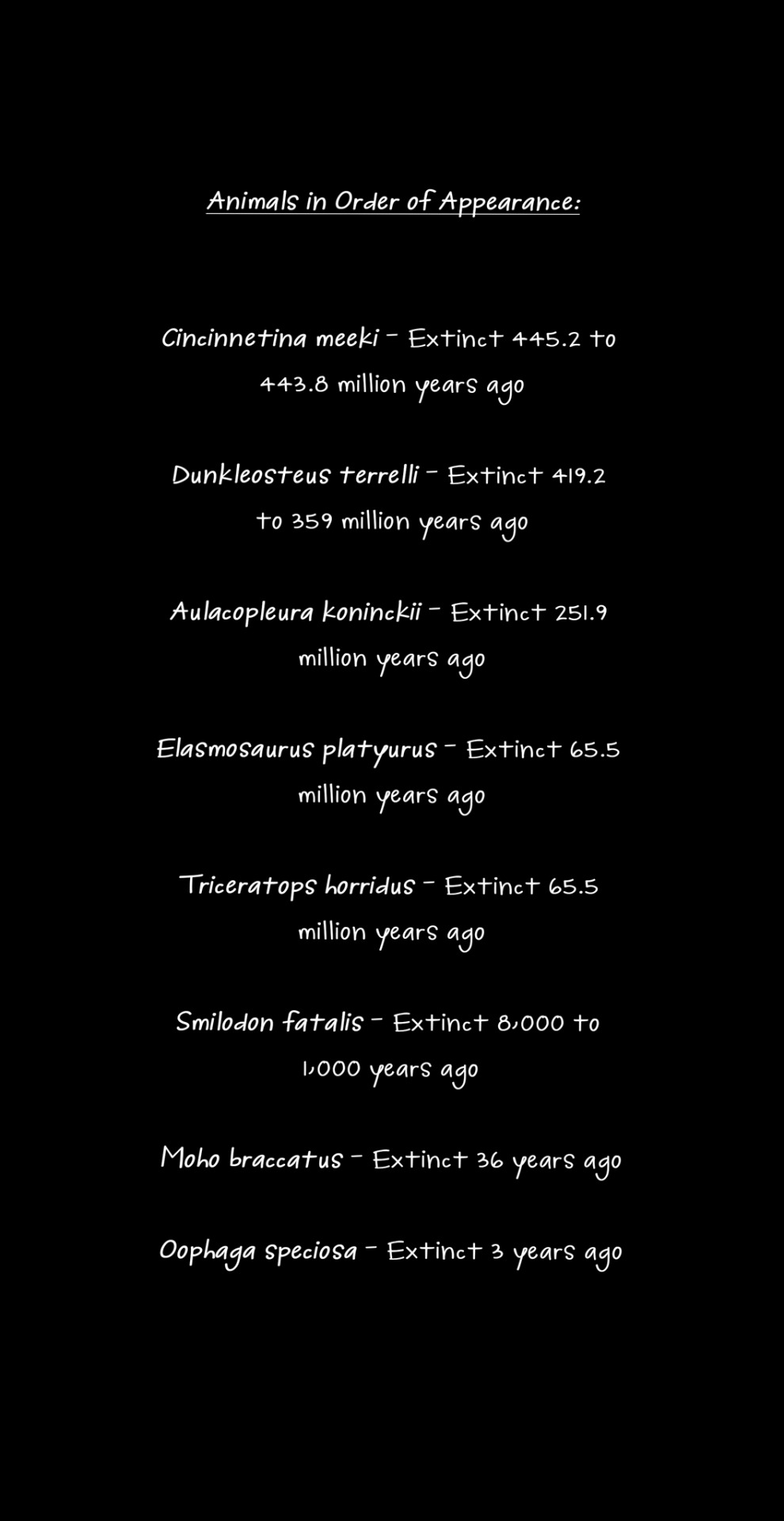

text from porter robinson's "goodbye to a world"
every single animal in this comic is extinct. it's not too late for the ones that are left.
edit: thanks @mudcrabmassacre for the correction, smilodon fatalis did not in fact go extinct in 1023 AD. the actual prediction is around 10,000 years ago - I think i may have missed a zero or two.
#comic#art#environment#conservation#animals#extinct species#fossils#climate change#dinosaurs#ancient life#endangered species#endangered animals#comics#artists on tumblr#digital art#digital comic#my-art
10K notes
·
View notes
Text
Re: Species conservation
Franklin’s 50/500 rule states that a species needs at least 50 individuals for short term survival and 500 for long term survival.
1 note
·
View note
Text
ok this sounds insane but in 2018 i went to a few carnivorous plant talks at the botany conference in minnesota. i got caught up in conversation with one of the guys there who was a huge nepenthes guy who told me a story about another collector in the pacific northwest who'd been buying poached plants, like a huge amount, and eventually got staked out by the fish and wildlife service and arrested and had all his plants seized and went to prison for it. idk if i ever talked about this on this blog before-- i know i liveblogged a lot from that conference but cant remember what all i posted-- but ive avoided talking about it since then because i was never able to find like, news articles or anything covering it, but behold.... we now have proof it was real, and im like 80% sure this was this guy he was talking about. the raid happened in 2016 and they'd been staking them out since 2013. he had nearly 400 plants and had been sourcing many of them from poachers in indonesia and borneo.
remember folks: poaching happens with plants too! it's a huge problem not only in carnvirous plants (nepenthes especially, which this piece is dedicated to talking about) but also in native plant populations in the US, including native carnivorous plant populations (north and south carolina's venus fly traps, california's darlingtonia, and sarracenia from the east coast), native orchids (historically one of the most poached categories), desert plants/cacti/succulents, and slow-growing woody ornamentals (cycads, for example). never buy bare-root plants off ebay or facebook! your best bet is local nurseries (which usually purchase farm-raised plants that do well in a wide range of conditions, and as a result have a healthy population in the wild) or specialty greenhouses (more expensive, but at least in the case of carnivorous plants offer young plants bred from established adult plants in-house, raised in captivity).
#super sad piece fellas like this shit guts me i cant even stress it enough#stories about nepenthes poaching hit different#there are hundreds of species#some are really common and widespread all over indonesia/china/japan/oceania#and some are like. super hyperadapted to one specific ridge on one specific mountain#theyre still being recorded and stuff because theyve speciated so much#so youll have a plant that has like. a max of 15 adults in the population at any given time. literally a nightmare scenario#AND theyre diaceous (there are male plants and female plants). doesnt seem like a problem until you think about the population dynamics#there not only has to be two plants but the plants have to be a male and a female#and people living there have reason to take them. like the poacher interviewed in this article does it to supplement his income#from working at a horrifying rubber production ordeal to feed his wife and kids#and he says everyone in his village does the same for the same reasons#nightmare!! nightmare!! nightmare horrible nightmare world!!! horrible fucking nightmare!!!!#nepenethes#carnivorous plants#poaching#conservation
11K notes
·
View notes
Text
Happy Earth Day!

We share this beautiful planet with over two million other species, from wasps the size of a grain of dust to whales larger than an office building. Yet, many of these species now face extinction due to the ways in which we humans have modified the planet to suit our needs. According to the International Union for the Conservation of Nature (IUCN), 13% of birds, 21% of reptiles, 27% of mammals, 37% of sharks, and 41% of amphibians are currently endangered, and some estimates suggest that 28% of all species on Earth are at risk of extinction in the near future. Imagine you woke up tomorrow and more than a quarter of every plant, animal, and fungus, from the elephants at the zoo to the earthworms beneath the soil, simply vanished, never to be seen ever again. If we choose to continue treating our planet so poorly, this will become a reality.
Here at Consider Nature, we believe the best way to protect our planet is to arm ourselves with knowledge! Over the years, we have written many articles on some of Earth’s coolest, weirdest, and most-endangered species, in the hope of inspiring readers to step up to the plate and protect biodiversity. I hope you will spend a few minutes of your Earth Day today reading about some of the species we believe are worth saving.

Zacaton grasslands in central Mexico, home to the Zacatuche, or volcano rabbit. Image credit: Jurgen Hoth
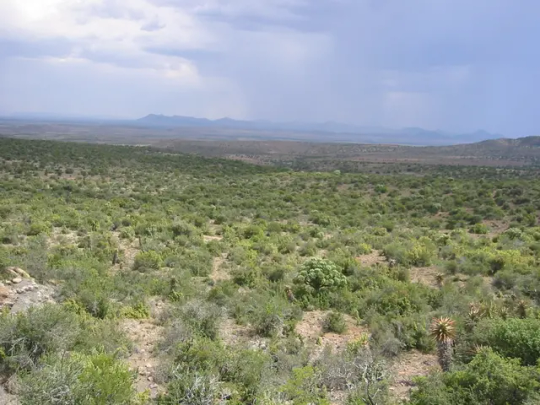
The Succulent Karoo, one of the most biodiverse ecosystems on Earth and home to the Karoo Padloper. Image credit: Tjeerd Wiersma under CC BY-SA 2.0.
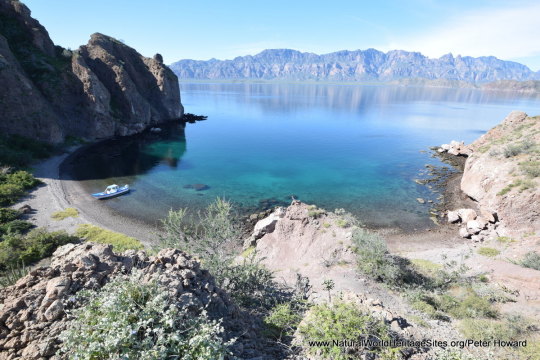
The Gulf of California, home of the critically endangered Vaquita. Image credit: Natural World Heritage Sites.
653 notes
·
View notes
Text
In the Willamette Valley of Oregon, the long study of a butterfly once thought extinct has led to a chain reaction of conservation in a long-cultivated region.
The conservation work, along with helping other species, has been so successful that the Fender’s blue butterfly is slated to be downlisted from Endangered to Threatened on the Endangered Species List—only the second time an insect has made such a recovery.
[Note: "the second time" is as of the article publication in November 2022.]
To live out its nectar-drinking existence in the upland prairie ecosystem in northwest Oregon, Fender’s blue relies on the help of other species, including humans, but also ants, and a particular species of lupine.
After Fender’s blue was rediscovered in the 1980s, 50 years after being declared extinct, scientists realized that the net had to be cast wide to ensure its continued survival; work which is now restoring these upland ecosystems to their pre-colonial state, welcoming indigenous knowledge back onto the land, and spreading the Kincaid lupine around the Willamette Valley.
First collected in 1929 [more like "first formally documented by Western scientists"], Fender’s blue disappeared for decades. By the time it was rediscovered only 3,400 or so were estimated to exist, while much of the Willamette Valley that was its home had been turned over to farming on the lowland prairie, and grazing on the slopes and buttes.
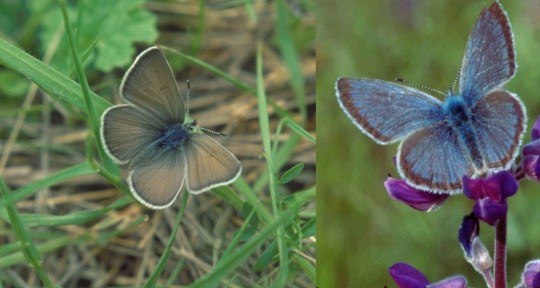
Pictured: Female and male Fender’s blue butterflies.
Now its numbers have quadrupled, largely due to a recovery plan enacted by the Fish and Wildlife Service that targeted the revival at scale of Kincaid’s lupine, a perennial flower of equal rarity. Grown en-masse by inmates of correctional facility programs that teach green-thumb skills for when they rejoin society, these finicky flowers have also exploded in numbers.
[Note: Okay, I looked it up, and this is NOT a new kind of shitty greenwashing prison labor. This is in partnership with the Sustainability in Prisons Project, which honestly sounds like pretty good/genuine organization/program to me. These programs specifically offer incarcerated people college credits and professional training/certifications, and many of the courses are written and/or taught by incarcerated individuals, in addition to the substantial mental health benefits (see x, x, x) associated with contact with nature.]
The lupines needed the kind of upland prairie that’s now hard to find in the valley where they once flourished because of the native Kalapuya people’s regular cultural burning of the meadows.
While it sounds counterintuitive to burn a meadow to increase numbers of flowers and butterflies, grasses and forbs [a.k.a. herbs] become too dense in the absence of such disturbances, while their fine soil building eventually creates ideal terrain for woody shrubs, trees, and thus the end of the grassland altogether.
Fender’s blue caterpillars produce a little bit of nectar, which nearby ants eat. This has led over evolutionary time to a co-dependent relationship, where the ants actively protect the caterpillars. High grasses and woody shrubs however prevent the ants from finding the caterpillars, who are then preyed on by other insects.
Now the Confederated Tribes of Grand Ronde are being welcomed back onto these prairie landscapes to apply their [traditional burning practices], after the FWS discovered that actively managing the grasslands by removing invasive species and keeping the grass short allowed the lupines to flourish.
By restoring the lupines with sweat and fire, the butterflies have returned. There are now more than 10,000 found on the buttes of the Willamette Valley."
-via Good News Network, November 28, 2022
#butterflies#butterfly#endangered species#conservation#ecosystem restoration#ecosystem#ecology#environment#older news but still v relevant!#fire#fire ecology#indigenous#traditional knowledge#indigenous knowledge#lupine#wild flowers#plants#botany#lepidoptera#lepidopterology#entomology#insects#good news#hope
4K notes
·
View notes
Text
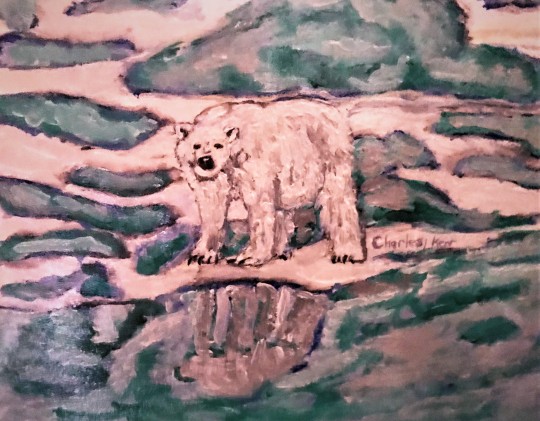
The polar bear is a hyper-carnivorous bear whose native range lies largely within the Arctic Circle, encompassing the Arctic Ocean, its surrounding seas and surrounding land masses. It is the largest extant bear species, as well as the largest extant land carnivore. Wikipedia
Eats: Seals and Arctic Fox
Conservation status: Vulnerable (Population decreasing) Encyclopedia of Life
Speed: 25 mph (Maximum, Adult, Sprint)
Species: U. maritimus
Class: Mammalia
Height: 5.9 – 8 ft. (Female, Adult, On hind legs), 4.4 ft. (Male, Adult, At Shoulder)
Mass: 990 lbs (Male, Beaufort Sea population, Mature), 330 – 550 lbs (Female, Adult)
Polar bears' personalities will vary due to life experiences, but at their core all bears have the same basic nature. They're very intelligent, playful, and curious. We've never given them reason to be fearful of us, so our mutual curiosity and respect translates into amazing, on-foot encounters. Nov 2, 2020
10 Cool Facts about Polar Bears - Churchill Wild
https://churchillwild.com › 10-cool-facts-about-polar- bears
Interestingly, the polar bear's coat has no white pigment; in fact, a polar bear's skin is black and its hairs are hollow. They have a thick layer of body fat, which keeps them warm while swimming, and a double-layered coat that insulates them from the cold Arctic air. 2.
The loss of sea ice habitat is the biggest threat to the survival of polar bears. Because of ongoing and potential loss of their sea habitat resulting from climate change, polar bears were listed as a threatened species in the US under the Endangered Species Act in May 2008. Other key threats include polar bear-human conflicts, overharvesting and industrial impacts. As climate change forces polar bears to spend longer time onshore, they come in contact more often with Arctic coastal communities and others working in the Arctic. Offshore petroleum installations and operations in the Arctic are expected to increase in number. This would likely affect polar bears and their habitat in many ways. Contact with spilled oil would be fatal for polar bears and an oil spill would affect the entire food chain.
1 note
·
View note
Text
“60 per cent of the mass of all mammals are domesticated animals - cattle, swine, sheep, horses, cats and dogs. For birds, it is even more stark. Sixty per cent of birds on Earth are from a single species - domesticated chickens. Taken as a whole, the mass of human produced material is, as of 2020, about equal to the mass of living material on earth.
If we were to sample the planet today in the same way that we sample the fossil record, we would look at the distribution of bones, and conclude that something very strange was going on so that so much of the vertebrate biomass was made up of so few species. We would be talking in terms of catastrophic environmental damage, of mass extinction.
Indeed, the biomass of wildlife has declined at a horrifying rate. The world into which Emilio Marcos was born in 1978 was home to 2.5 times as many wild vertebrates as the one in 2018. In a geological snap of the fingers, we have lost more than half of the living individual vertebrates on the planet.”
-Thomas Halliday, Otherlands
436 notes
·
View notes
Text

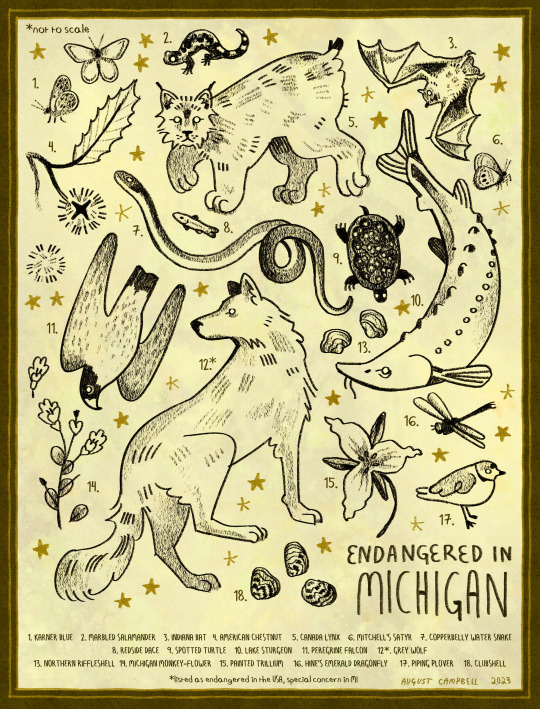
ENDANGERED IN MICHIGAN [redraw]
1. karner blue 2. marbled salamander 3. indiana bat 4. american chestnut 5. canada lynx 6. mitchell's satyr 7. redside dace 8. copperbelly water snake 9. spotted turtle 10. lake sturgeon 11. peregrine falcon 12*. grey wolf 13. northern riffleshell 14. michigan monkey-flower 15. painted trillium 16. hine's emerald dragonfly 17. piping plover 18. clubshell
*listed as endangered in the USA, special concern in MI
#my art#art#endangered species#michigan flora#michigan fauna#michigan wildlife#biology art#conservation#north american wildlife
2K notes
·
View notes